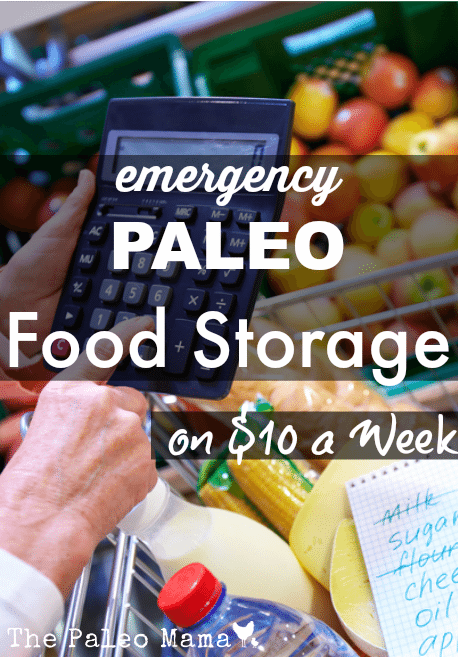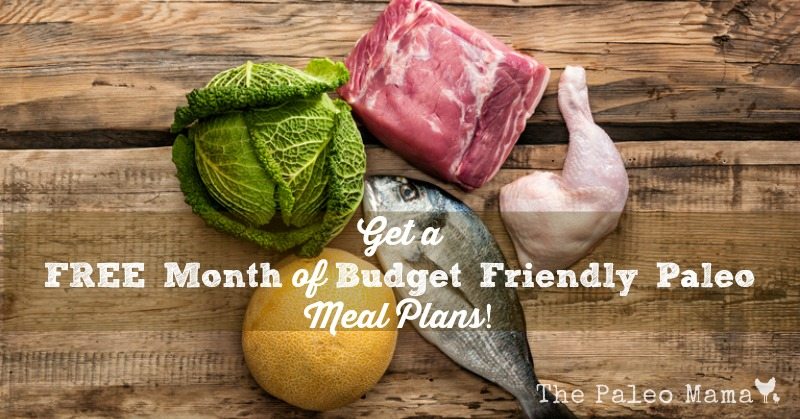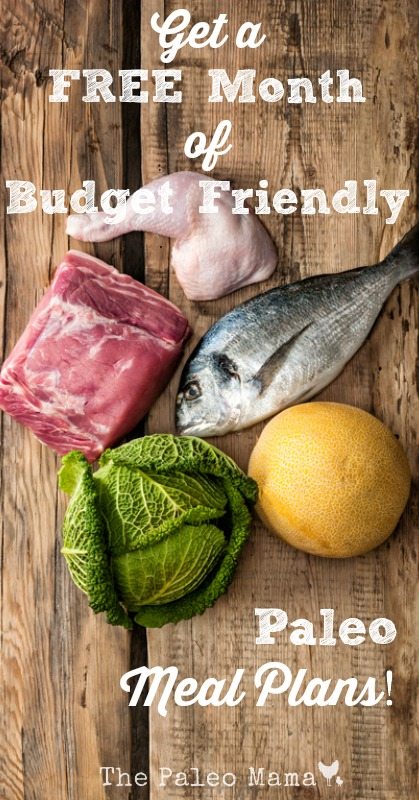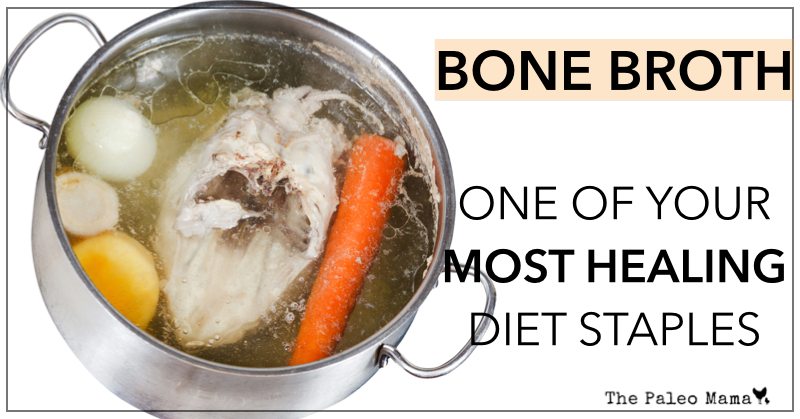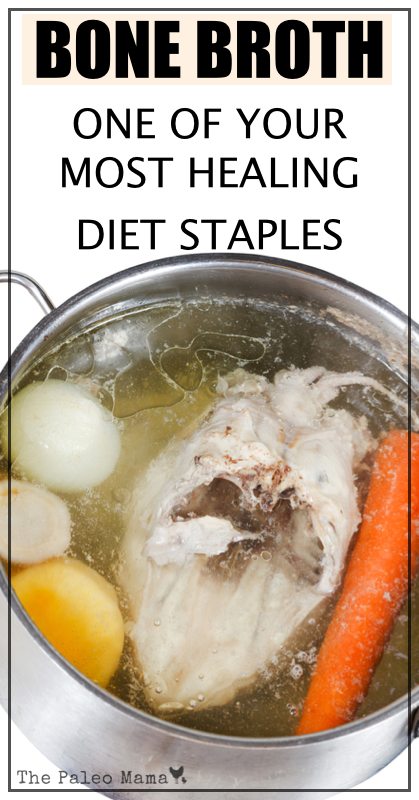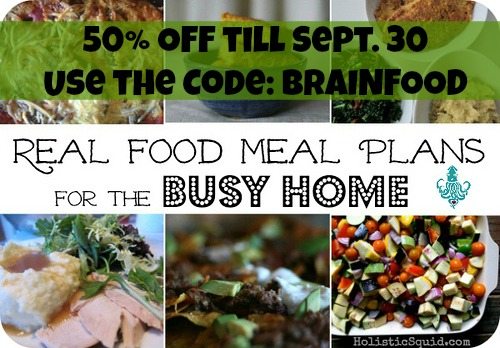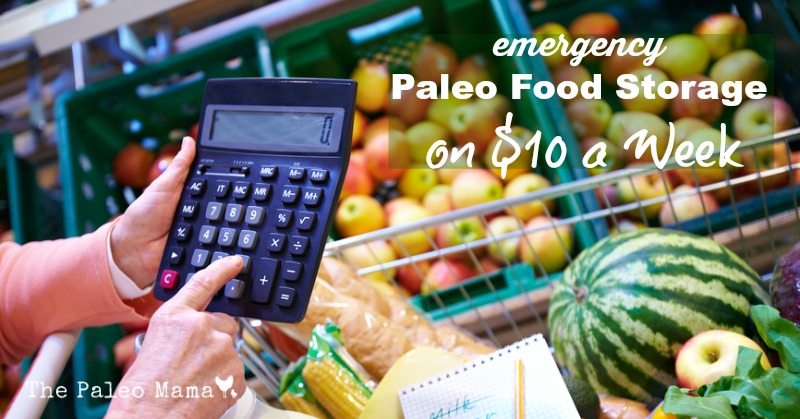
In a recent blog post we introduced you to the concept of stockpiling enough food to feed your family for a full year. We are beginning to do this ourselves, and we recommend it to you. We don’t want you to have a “Mother Hubbard Experience” of not having enough food in your cupboard so we want to take a further step to help you actually be able to do this without busting your budget. If you can budget just $10 per week to accumulate your stockpile, we will show you how to have the full year of emergency paleo food storage by spending just $10 a week for 52 weeks.
How do I set up my budget for this?
This way of stockpiling food is the “low and slow” method. It takes time, 52 weeks, but it also only requires a low financial burden. If you are on a tight budget, this is the perfect plan for you. Remember that this plan begins by developing a master plan. You will need to:
- Determine what you eat
- Determine how much you need
- Determine what you will use your $10 for each week.
It is our plan to grow and provide as much of our own food needs as possible. We will not need to purchase as many items at the grocer, but will be preserving and storing the bounty from our own harvested fruits and veggies, and the livestock and poultry from our own farm animals. If you also plan to grow as much of your own produce as possible, you may want to begin your 52-week accumulation by using the first 4 weeks, or $40, to stock up or save your seeds for the next planting year. It would be ideal to begin this process in the spring with the start-up of your planting year.
I recommend that you use an envelope system for your weekly $10 and saving for your emergency paleo food storage. Make an envelope and label it, “Food Storage”. Each week you will purchase $10 worth of food items for your food storage and ONLY use the $10 you have in that envelope. If you have money left over from last week, move it over and use it for future food storage purchases. What the weekly envelope achieves for you is an easy way for you to roll over any spare change each week into the next week’s envelope. Don’t use credit cards for this process; interest rates are self-defeating and just create a bigger problem. To budget for this new process, you may need only to forego one restaurant meal a month or decide to rent a video to watch at home rather than paying full admission for your family at the theater.
It will be very important for you to watch for seasonal sales, holiday sales, special offers at local co-ops or farms, and other money-saving opportunities.
How do I ensure that I am getting the specific foods we will need to continue our Paleo or gluten-free lifestyle.
I know that the majority of those who follow my blogs have very specialized eating styles, most of whom follow a Paleo lifestyle. Not all the information you can research on this subject takes into account the specialized Paleo needs. That’s why we want to help you do that with information we will share in this blog.
As you develop your list, be sure to list the approved foods you are willing to use. For example, you will need a grain-free substitute for the flour grains that may be listed in an online proposed master list. Determine what you are willing to use: almond and coconut flours, flaxseed and quinoa, dairy substitutions like almond or coconut milk, cheese substitutes like nutritional yeast, and ghee as a storage ready butter substitute.
Be sure that your emergency paleo food storage is weighted toward wonderful fruits and veggies that can keep well in a root cellar, and plan in advance the kinds of grain-free, dairy-free (unless you are primal) and protein-dense meals you can make from your storage foods. Stockpile your recipes also, including delicious soups and stews along with your favorite menu items.
What specific foods should I purchase each week to have a one-year supply in 52 weeks?
It will take you some time to thoughtfully plan out how you will accumulate the foods for your one-year storage plan. There are many proposed lists that you can review, but ultimately your master list will be specific to your family’s needs, favorite foods, and what foods you will grow or produce yourself as opposed to those you need to purchase.
There is a wonderful list available that is specific to the Paleo diet, and we recommend that you begin with that list. You will purchase the listed item for each week. For example, on week one, when you do your grocery shopping, you will purchase one refill pouch of Real Salt. The second week you will purchase 3-4 cans ($10 worth) of full-fat coconut milk. You can use the suggested purchases in that list to plan your own purchases, taking into account your family preferences, local and seasonal sales in your area, and relationships you may have already developed with co-ops, produce stands, or local farmers.
Your list will also need to be adapted to the preparation and preservation you can accomplish for your own home-grown fruits and vegetables, or home-raised livestock and poultry.
If you are not quite Paleo, but you eat real, whole food, then I recommend you take a look at this list.
Hints from Experienced Food Storage “Addicts”
You can learn from those who have been doing this for some time. They have gone through the trial and error periods and have developed time-tested ways to be successful at storing food for a year. Here are just a few snippets of the advice they can provide to the novice stockpiler.
- “In the beginning when I started to plan for a year’s worth of household needs, I had absolutely no idea about how many…pounds of hamburger or coffee were used in my home in any given year. The way that I was able to determine that information was with a wall calendar diary and pen. Every time I’d open a package of chicken…or jar of peanut butter I’d note it on the calendar. I was determined and faithful about recording all food, supplies and ordinary household sundries. By the end of the first year I had a pretty good idea of what I was and wasn’t using and how much of each item I was consuming.” – Granny Miller
- “When living off food storage adequate vitamin and mineral consumption can be a problem. Fresh sprouts pack an enormous punch relative to their size. In a long term emergency situation, they may be the only fresh food you can get your hands on. You don’t need a fancy sprouter, a simple canning jar with nylons, or cheesecloth in place of the lid will work beautifully.” – Eating Food Storage
- “Take the amount of food you would need to purchase to feed your family for a day and multiply that by 7. That is how much food you would need for a one-week supply. Once you have a week’s supply, you can gradually expand it to a month, and eventually three months.” – LDS
- “Every June I start anew the annual cycle of putting aside a year’s worth of food and supplies. The goal is to have all the food and supplies I need in my pantry, cupboards, closets and cellar by Halloween. My practical food storage education first began in the mid 1980’s when I attempted to store a winter’s worth of food and household sundries. I live in the snow belt on a rural back road and in those days it was not at all unusual for us to be literally snowed in and house bound for a week at a time; a few times every winter. My winter pantry proved to be such a wonderful convenience, and time and money saver, that by 1990 I extended my pantry and household stores to last 1 year. I took a lesson from my husband’s Appalachian grandmother and coincided the beginning of my food storage efforts with each year’s new gardening and growing season. For my household, the food year begins with planting the garden in spring and ends with the final harvest in the fall.” – Granny Miller
- “There are actually 2 types of food storage. When I finally realized that I need to have 2 plans it was like a light bulb went on. First, a shorter term emergency food supply. Short term emergency food supply is what will be used on a continuing basis. I consider my 3 – 12 month supply of food to be short term food storage. This food is used on a regular basis and is rotated and restocked regularly. A longer term emergency food supply. Figure out how much food you need to collect for your long term food storage. These foods will be the types of items that can be the basics of survival food.” – Simply Canning
Resources
- https://www.intentionallydomestic.com/real-food-storage-on-10-a-week-paleo-diet-edition/
- https://www.intentionallydomestic.com/build-your-food-storage-on-10-a-week-general-real-food/
- https://www.thekitchn.com/how-to-start-a-food-storage-on-138765
- https://www.backwoodshome.com/articles/hagan59.html
- https://www.grainfreeliving.com/list-of-grain-and-grain-free-foods/
- https://www.kitchenstewardship.com/2013/07/29/eating-grain-free-resources-and-recipes-all-in-one-place/
